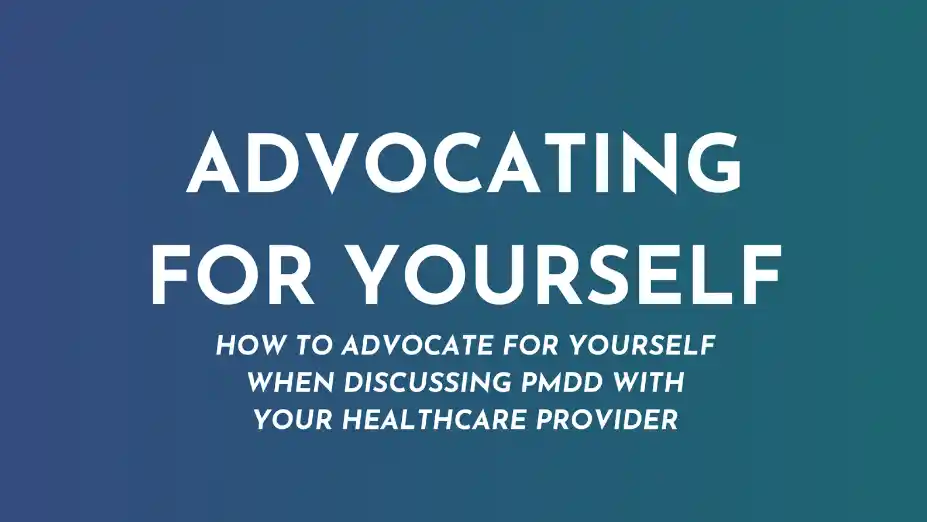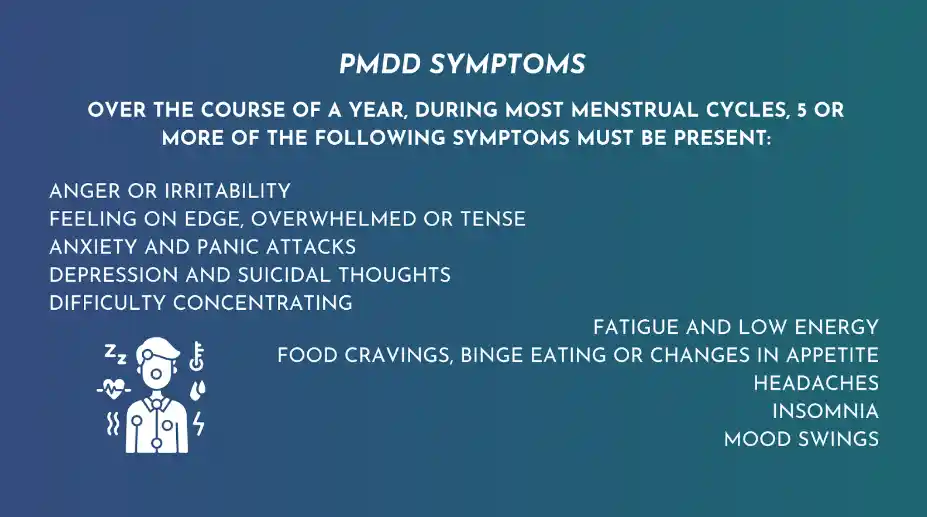You Are Not Alone: Advocating for Yourself When Discussing PMDD with Your Doctor

Premenstrual dysphoric disorder (PMD or PMDD) is a more severe form of premenstrual syndrome (PMS). Premenstrual dysphoric disorder (PMDD) can significantly impact your life, causing emotional and physical symptoms in a week or two leading up to your period. Getting the right diagnosis and treatment can feel like an uphill battle as oftentimes, our symptoms have been misdiagnosed or dismissed altogether.
The thing is, you are your own best health advocate. By being prepared and assertive, you can have a productive conversation with your doctor and work towards managing your PMDD effectively.
Before your appointment:
- Gather information: Research PMDD symptoms and how they affect you. Keep a mood tracker to document your experiences over several cycles, noting emotional and physical changes. For tracking my cycle, I use the Flo app to monitor emotional and physical changes. Additionally, I keep a journal on my phone’s notes app to record anything else that might be relevant to my doctor.

- Write down your questions: Consider questions about diagnosis, treatment options, potential side effects, and any concerns you may have. Everyone will have different questions but here are a few of the questions I asked my doctor when discussing new treatment options:
- Can you recommend any resources for me to learn more about PMDD?
- Are there any lifestyle changes I can make to manage my PMDD symptoms?
- How often should I schedule follow-up appointments to monitor my PMDD?
- How can PMDD affect me if I choose to start a family?
- Practice makes perfect: Rehearse what you want to say to your doctor. This can boost your confidence and ensure you cover everything important.
During your appointment
- Be clear and concise: Explain your symptoms and how they impact your daily life. Don’t downplay your experiences; emphasize the severity and how they disrupt your well-being.
- Use “I” statements: Focus on how PMDD affects you personally. Phrases like “I feel” and “This makes it difficult for me to…” can be more impactful.
- Be your own expert: Share the information you gathered about PMDD. Mention the mood tracker you kept and highlight patterns you’ve observed.
- Ask questions: Ask for clarification or express any concerns about treatment options.
Remember
- It’s okay to say no: If you’re uncomfortable with a treatment suggestion, discuss your concerns and explore alternative options.
- Don’t be afraid to seek a second opinion: If you feel unheard or dismissed by your doctor, consider seeking the perspective of another healthcare professional.
- By advocating for yourself, you take control of your health journey.
Additional resources (click on the link):
The National Institute of Mental Health
International Association for Premenstrual Disorders
